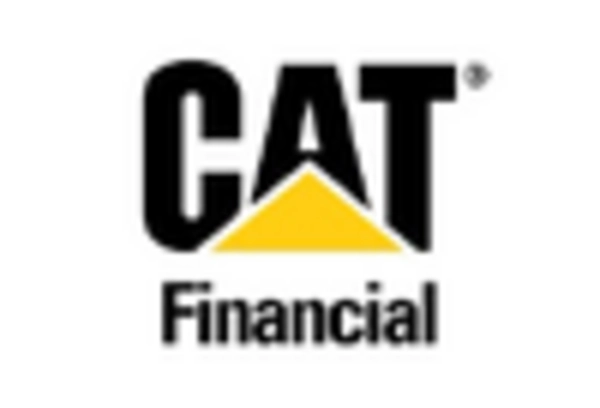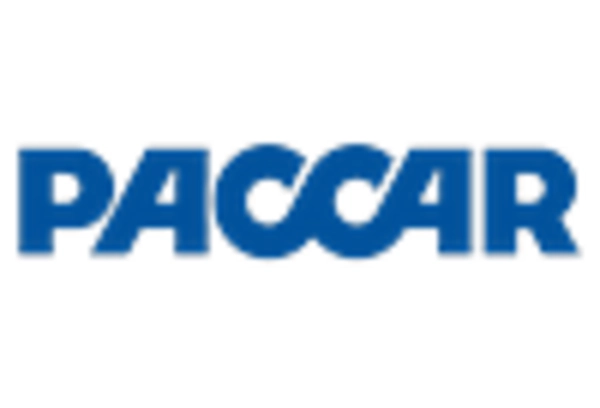Rising Infrastructure Development
The Heavy-Duty Vehicle Rental Market is experiencing a surge in demand due to increased infrastructure development projects. Governments and private sectors are investing heavily in roads, bridges, and public transport systems, which necessitate the use of heavy-duty vehicles. For instance, the construction sector is projected to grow at a rate of 4.5% annually, driving the need for rental services. This trend indicates that companies prefer renting over purchasing vehicles to manage costs effectively. The flexibility offered by rentals allows businesses to scale their operations according to project requirements, thereby enhancing efficiency. As infrastructure projects expand, the Heavy-Duty Vehicle Rental Market is likely to benefit significantly from this trend.
Growth in E-commerce and Logistics
The Heavy-Duty Vehicle Rental Market is poised for growth due to the expansion of e-commerce and logistics sectors. With the rise of online shopping, there is an increasing need for transportation solutions that can handle large volumes of goods. The logistics industry is expected to grow by approximately 6% annually, creating a demand for heavy-duty vehicles that can facilitate efficient delivery. Rental services provide businesses with the flexibility to adjust their fleet size based on seasonal demands without the burden of long-term investments. This adaptability is crucial for logistics companies aiming to optimize their operations. Consequently, the Heavy-Duty Vehicle Rental Market stands to gain from the ongoing evolution in e-commerce and logistics.
Increased Focus on Cost Efficiency
Cost efficiency remains a pivotal driver in the Heavy-Duty Vehicle Rental Market. Companies are increasingly recognizing the financial advantages of renting vehicles rather than purchasing them outright. This trend is particularly evident in industries where capital expenditure is a concern. By opting for rentals, businesses can allocate resources more effectively, avoiding the high upfront costs associated with buying heavy-duty vehicles. Moreover, rental agreements often include maintenance and insurance, further reducing operational costs. As organizations strive to enhance their bottom line, the Heavy-Duty Vehicle Rental Market is likely to see a sustained increase in demand driven by this focus on cost efficiency.
Regulatory Compliance and Safety Standards
The Heavy-Duty Vehicle Rental Market is influenced by stringent regulatory compliance and safety standards. Governments are implementing more rigorous regulations regarding emissions and safety, compelling companies to ensure their fleets meet these requirements. This has led to an increased demand for rental vehicles that comply with the latest standards, as businesses prefer to avoid the costs associated with upgrading their owned fleets. The emphasis on safety and environmental regulations is expected to drive a 15% increase in the rental market as companies seek compliant solutions. Thus, the Heavy-Duty Vehicle Rental Market is likely to thrive in an environment where regulatory compliance is paramount.
Technological Integration in Rental Services
The Heavy-Duty Vehicle Rental Market is witnessing a transformation through the integration of advanced technologies. Fleet management systems, telematics, and real-time tracking are becoming standard features in rental services. These technologies enhance operational efficiency, allowing companies to monitor vehicle performance and optimize routes. The adoption of such innovations is expected to increase by 20% over the next few years, indicating a shift towards more data-driven decision-making in the rental sector. As businesses seek to improve their logistics and reduce downtime, the Heavy-Duty Vehicle Rental Market is likely to benefit from this technological evolution.


















Leave a Comment